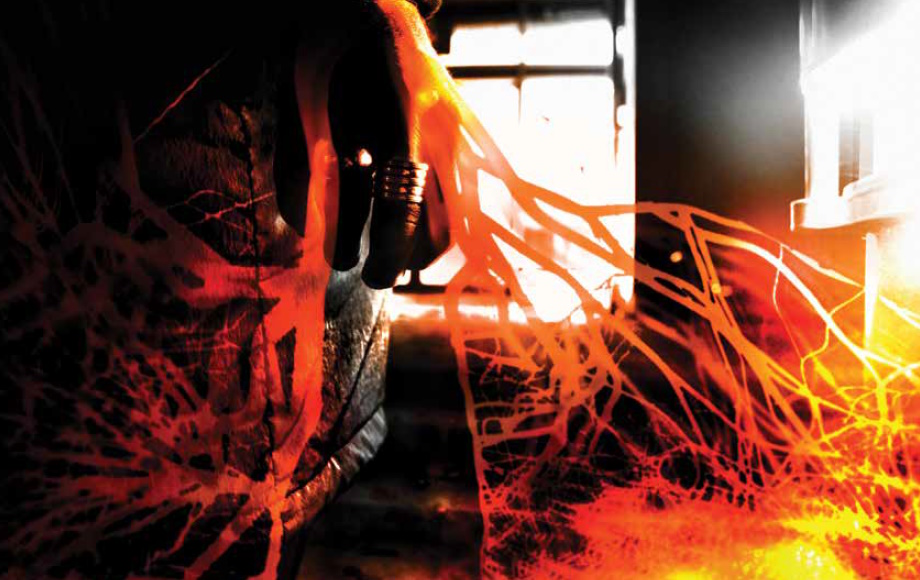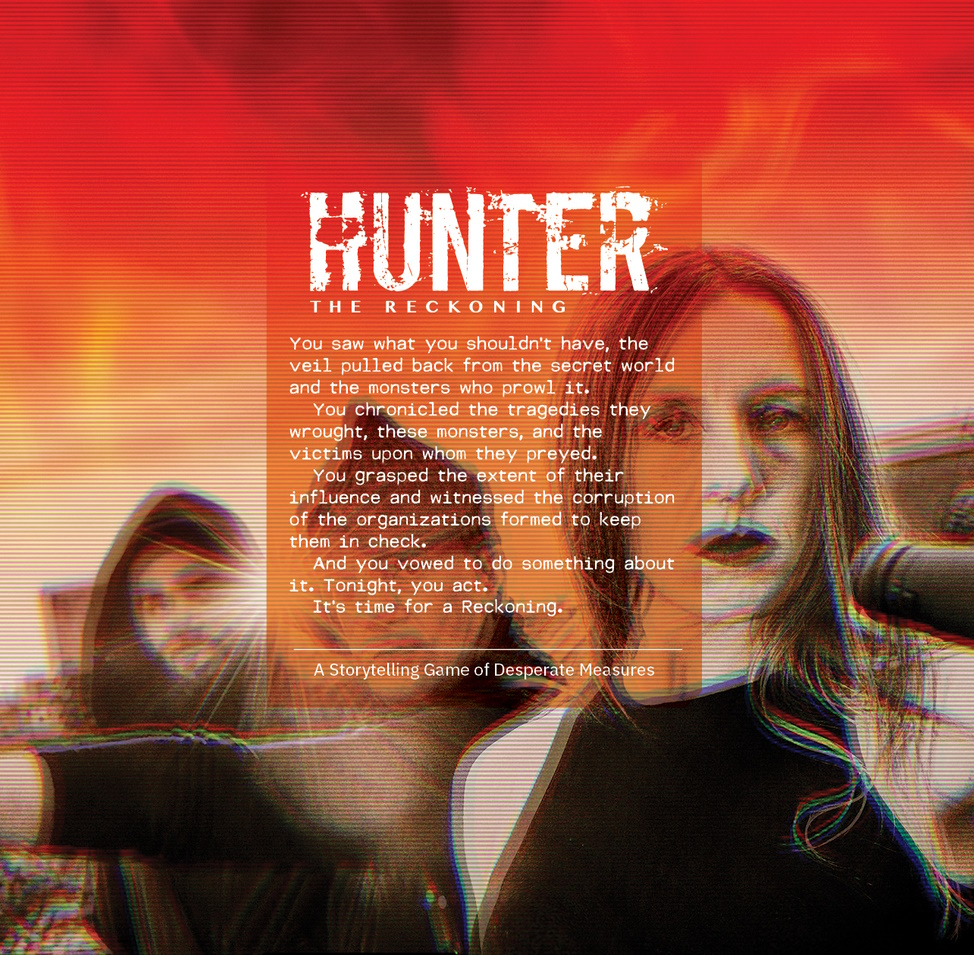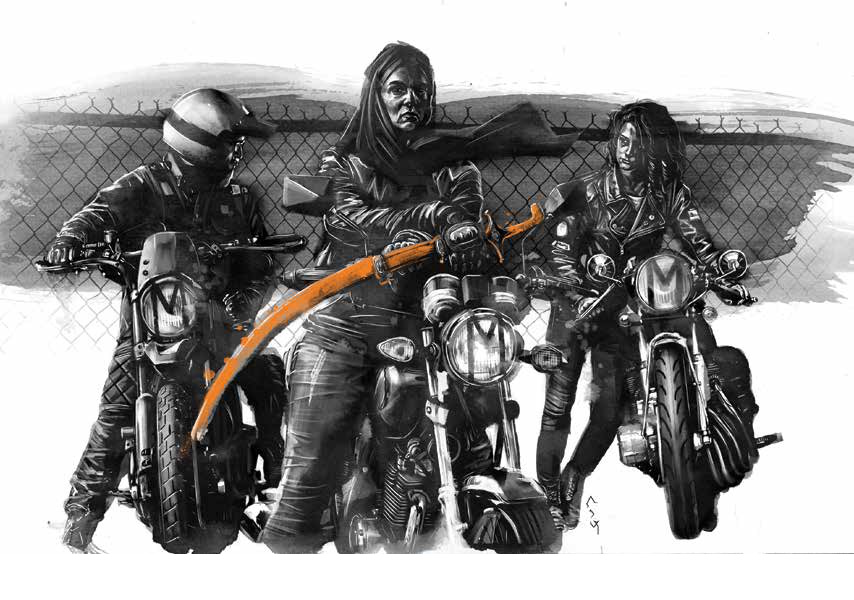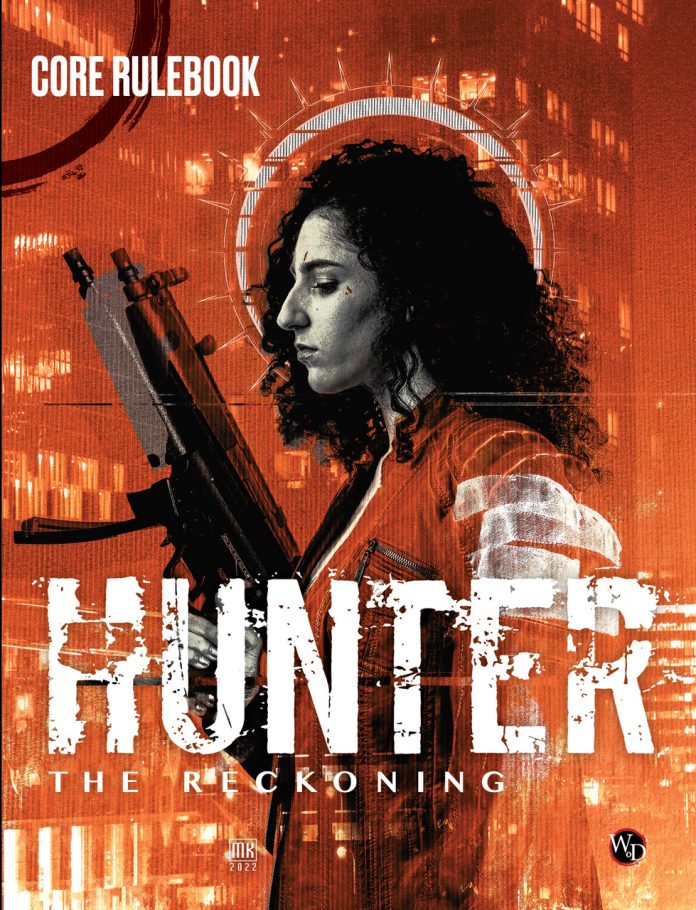It would be fair to say that there was some surprise when Hunter: The Reckoning was announced as the next World of Darkness game to be developed after Vampire: The Masquerade – 5th edition (V5 – reviewed here). Many had expected that Werewolf: The Apocalypse (W5) would be the next game developed (it actually came after this and is reviewed here), whilst some hoped for Mage: The Ascension.
However, a fifth edition of Hunter: The Reckoning (H5) was a logical choice to follow V5. After all, vampires are, amongst others, the natural quarry of the hunters. That said, the hunters of H5 do not just hunt vampires; they hunt anything that threatens innocents within the World of Darkness.
It is worth noting that there were previously two hunter games in the World of Darkness. There was the original Hunters Hunted, a sourcebook for playing people hunting vampires using Vampire: The Masquerade. A few years later Hunter: The Reckoning was released, for playing supernaturally-imbued hunters. H5 removes the imbued abilities and retains the core character concepts of Hunters Hunted to create a new version of the game.
In H5, players take on the role of people that have glimpsed the horrors of the night. Rather than having the powers of the imbued, hunters rely on their innate skills and abilities. There are some mystical powers available for hunters, but the emphasis – like the rest of the 5th edition – is on a more grounded approach to the World of Darkness.

There are a variety of different types of hunter, based on their creed (their background and how they approach hunting) and their drive (why they hunt).
Another defining aspect of the hunter is their edge. An edge is an exceptional talent or ability they have, such as ‘arsenal’ or ‘drone jockey’. Most of the edges are relatively grounded, but a couple are supernaturally endowed, such as ‘repel the unnatural’ for example. Edges can be further enhanced with perks, giving additional benefits above the standard. During character creation, players have the choice of selecting an edge with two perks or two edges and a perk.
A core concept of H5 is the theme of collaborating and working as group. Mechanically, this is represented by the group, known as a ‘cell’ in the game, having a desperation and danger rating. These ratings are 1 to 5 and they change throughout the game due to the actions of the player characters.
Danger usually starts at 1 and rises throughout the game as the quarry becomes aware of the cell’s actions against them. As the danger level increases, the cell’s quarry takes additional protection, such as bodyguards. The danger level can decrease if the cell chooses to stop actively pursuing the quarry, but this can cost the lives of innocent victims. Desperation meanwhile represents the stress the cell is under, which can increase through the danger to which they are exposed, or decrease due to their successes in the field.

Skill checks are made by combining the skill and attribute (such as wits and alertness). In cases relating to their drive, a character can add a number of equal to the desperation rating of their cell. This is akin to the hunger mechanics in V5 or the rage mechanic in W5.
The results of a skill check are interpreted by the number of successes on a dice (6 or over). Rolling a 1 on a despair dice, but still succeeding, means that the character over-reaches, alerting the quarry and thereby increasing the danger level for the cell. Failing a skill check when using desperation dice leads to despair for the character, where they succumb to the overwhelming odds facing them and need to redeem themselves in accordance with their drive.
This is where the touchstones come into play. A touchstone acts as a reason for the hunters to continue pursuing their vendetta against the supernatural and can help restore their willpower. A hunter without any touchstones permanently descends into despair. However, a touchstone can also become a potential liability, especially if a touchstone is threatened by the very forces the hunters are pursuing.
The system for H5 is very similar to that in V5 and W5, offering lots of crossover potential. Hunters are probably the characters that have the most potential for interacting with the game lines, as they hunt anything. Anyone familiar with V5 or W5 will have an understanding of how to play H5.

Although H5 is a game about hunting monsters, the threat posed by them is such that any physical confrontation should be kept to a minimum. Instead, the focus of the game is on the investigation and coordination. The players will need to investigate the monster, find its lair and learn its vulnerabilities, before setting an ambush to eliminate it. Facing a monster should be an epic grande finale and it should be hard – hunting monsters is a dangerous occupation and the unprepared will not survive.
Standing alongside the vigilante-style cells in H5 are the larger government or privately-funded organised groups, otherwise known as ‘orgs’. There is a disconnect between the hunter cells that are out to hunt monsters and the orgs that hunt monsters, but have other reasons for doing so. The government-level orgs, like Special Affairs Division and the Information Awareness Office, are covered in greater detail within the Second Light sourcebook for V5.
The background on the orgs is very good. The Order of the Rose is absolutely terrifying, as it like a cross between the Stepford Wives and a fundamentalist cult. Re:Venge is a fun org, riffing on the gig economy, but feels out of place in the World of Darkness, as it implies there is a wide knowledge of the monsters within the setting than has previously been established.

The list of antagonists facing the hunters is amazing. There are some fantastic ideas; more than just another vampire or a werewolf, as the writing added lots of texture to them. The background material embraces the focus on the research and investigation, rather than just the extermination. It could be argued that H5 is worth getting for the antagonist section alone, as they would make excellent storyteller characters for V5 or W5.
Due to the mature nature of H5, the core rulebook concludes with a discussion about storyteller tools for dealing with sensitive subject matter, such as lines and veils, and a ‘session zero’ for character creation and setting the tone and subject of the games.
H5 ultimately abandons the superpowers of the original Hunter: The Reckoning for a more grounded approach to hunting monsters that fits well within this new World of Darkness. By incorporating the danger and despair mechanics into the game, H5 explores the psychological toll that being a hunter has on the characters and how they need to maintain their humanity when fighting monsters.



